Write And Develop A Project Management Plan, Here’s How!
Do you have an upcoming event planned for your business? Or do you see your business achieve a goal down the years? Well, all of these are termed projects. Some can be short-term while the others are long-term.
Have you ever been part of such a project? Were there any shortcomings on it that lead to its failure? Guess what, a major reason for it could be improper planning.
Before you kickstart your project, it is essential to have a project management plan for seamless execution. This will give your business a boost and achieve your goals.
What is a project management plan?

Every project has its own twists and turns. However, all of them are based on the same framework, which is called the project management plan.
It is defined as the documentation of the project which explains the execution process of the project. It includes an outline of the scope, deliverables, timeline, goals, budget, and risks associated with the project.
You must write down the project plan and get it approved by the stakeholders before execution. Ensure that the project plan is presented in a well-organized and engaging form.
Phases of a Project
While some projects are easy, the others can be complex. However, all of these go through 5 project management steps:
- Initiation: This is the first step where the project feasibility is determined. The project goals along with its practical applications are also taken care of.
- Planning: At this stage, the main groundwork is carried out. Here, a proper work breakdown structure (WBS) defines the project scope. Following this, the project manager and the team decide the methodology to be followed.
The estimation of budget, quality, and resources required is also taken into consideration. Further, a project timeline is formed which defines the milestones and the main goals of the project. This is the most crucial part of a project management plan. - Execution: Once you have the plan laid out, it is time to execute it. This phase involves the division of teams and departments to carry out the tasks. During execution, it is essential to take regular follow-ups and team meetings. This will help in the analysis of the work status and understanding the shortcomings of the plan if any.
- Monitoring and control: This is carried out along with the execution. The performance metrics are tracked to check the project progress. In case of any issues, other plans can be implemented to keep the project aligned.
- Closure: The final step where the deliverables are provided to the stakeholders. This happens after project completion. At this stage, the resources are released, and signing off of the contracts takes place. Finally, there is an evaluation of success and failure measures.
Components of a project management plan
Before you start writing down the plan for your project, here are some of the essential components involved in it:
1. Executive summary:
It contains an overview of the report with a short description. It also contains all the contents of the project.
2. Deliverables of the project:
It provides an outline of the project deliverables and their scope. Further, a description is provided which will state how the deliverables will be broken down into measurable tasks.
3. Project schedule:
In other terms, it is the timeline of the project. It states when the project will be completed and subsequent milestones.
4. Project resources:
This involves all the resources of the project like the budget, personnel, and other such things. All of these are used to meet the project goals.
5. Risk management plan:
What will happen if one plan does not execute the way you expect? This plan is devised for such circumstances. It identifies how such issues will be addressed and controlled.
6. Communication management plan:
This involves how communication will take place between the team and stakeholders. Alongside, it also includes how various scenarios will be taken care of.
How to write the project management plan?
The drill isn’t over yet. Rather, it has just begun. Writing down the project plan is the quintessential aspect of the project. If anything goes wrong here, it can lead to future consequences. It clarifies the plan of action and the process to be followed by the team.
Usually, after writing the plan, a methodology is decided on to be followed. There are several project methodologies based on the types of projects. Here is how you can take the development of the project forward.
a) Know the business case:
This is the first step even before you take the project. You should know what will be the ROI of the project for your business? Why is it being initiated? And most importantly, the role of your business in the project. It involves outlining the business case. This is presented before the project managers. If approved, the project receives a go-ahead.
b) Meet the stakeholders:
Stakeholders are those people who are involved in your project. They can be the end-users and customers. Always identify who your stakeholders are when creating the plan. This will help you establish the baseline for project scope, build communications with them, and keeps everyone on the same page. Further, this will allow you to have an idea of the final deliverables.
c) Know the project scope:
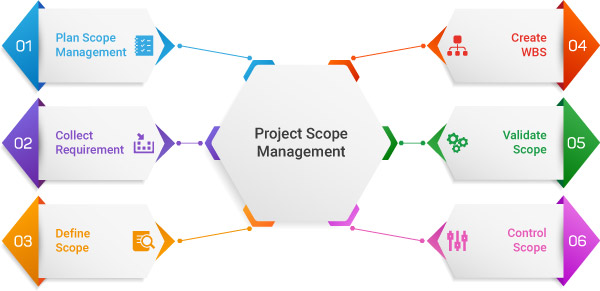
Know how much effort you need to put into the project to achieve the objectives. It includes all the elements to be added like tasks, deliverables, activities, and others to be carried out during the course of the project. Ask questions like, ‘What do the stakeholders expect?’. You must clearly understand what the project is entitled to. Have a comprehensive description of the project.
d) Set the objectives and goals of the project:
When creating a project management plan, you must know the bottom line. Goals are usually broad and these are the results that one expects to achieve through the project. Objectives are specific. During the course of the project, you need to set up the goals and objectives, which will help you constantly throughout the project.
e) Outline the project deliverables:
What is the outcome of the project? A project can have multiple deliverables. These include goods, services, and maybe a business deal. They can be provided during the course of the project and even at the end.
However, the thing of utmost importance is to know the final deliverables. Someone in the team should be accountable for these deliverables and the successful completion of the project.
f) Create a defined schedule for the project:
Everything relies on the timeline of the project. Whether it be the completion of tasks or budget. You can make the schedule by combining the tasks which will help in getting the final deliverable.
You can break your schedule into various phases, which can have milestones. This will make the tracking process streamlined. Further, the milestones indicate the ending of one phase, to begin the next one.
g) Task allocation:
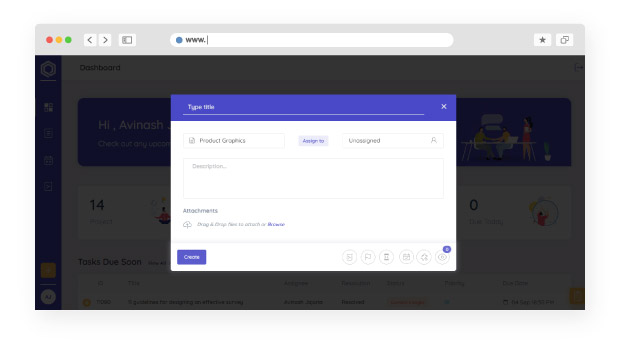
After you have set the plan, the next step is to allocate the tasks. Assign them to the team and form departments. This will allow them to comprehensively work to attain the goals. Define the responsibilities and roles of people in the team. They should clearly understand their tasks and have the appropriate skills to attain them.
h) Risk management:
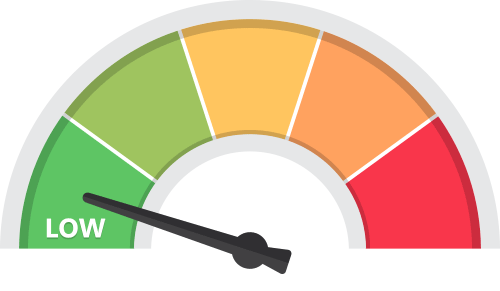
Know the risks involved in the project. Risks are inevitable. You need to have backups for them in some form or the other. Risks can be in several forms like technical, scope risks, and even schedule risks. Several external factors can also affect your project. This makes it important to have a flexible plan. To monitor the risks effectively, you can also have project management software.
i) Report the progress:
The stakeholders are the ones investing in the project and having some expectations. So, your ultimate aim is to meet the expectations of the stakeholders and deliver them with successful results.
Keep the stakeholders informed through the process. This will make them satisfied. It will also help you ensure that the progress reports are matched and everything is being carried out as planned.
j) Final delivery of the project:
Once everything is planned and executed, it is time for the final delivery of the project. Execute it well and hand it over to the stakeholders. They will further determine whether their project expectations are met or not.
Why choose a project management software?
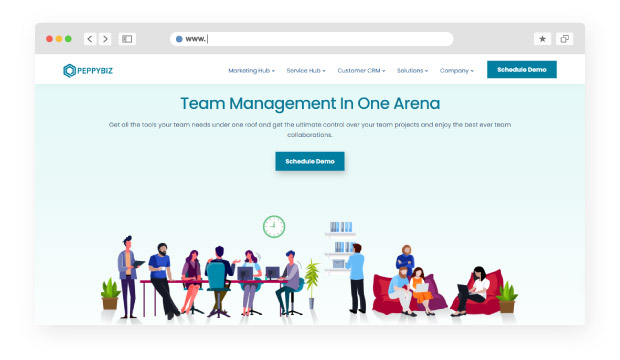
Why do all the work when you can have a chunk of it automated? A project management software is a great tool to help you throughout the course of the project. The various benefits of project management tools are as follows:
- Organization and prioritizing the tasks
- Scheduling and planning the project milestones
- Team collaboration
- Progress monitoring
- Project report generation
If you are looking for the best project management software, then, we at Peppybiz are here at your service. We provide you with the best project management tool in one arena. You can get complete with your project and collaborate with your team alongside. The features that we offer are as follows:
- Checking project progress
- Denoting the project timeline
- Task allocation to the team
- Accountability of the project
Not just this, there are several other features that we have for you.
Conclusion:
If you have the projects lined up, you now know what you need to do. Have a project management plan! So, with all the elements in hand, get started right away, and deliver a successful project.



